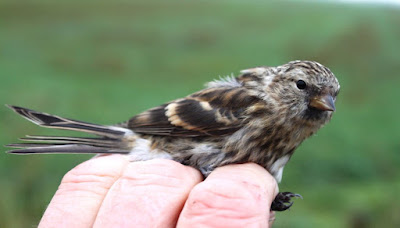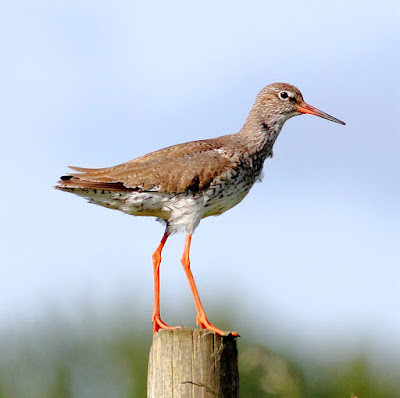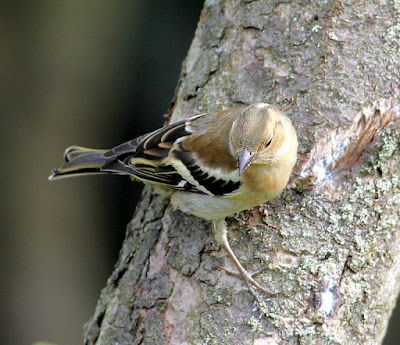Saturday, December 24, 2022
The End
Saturday, December 17, 2022
As Cold As Ice









Wednesday, December 7, 2022
Down To Zero
Saturday, December 3, 2022
Tuesday and Saturday
On Tuesday I wore five on top, three below for the expedition. And don’t forget the gloves, scarf, woolly hat and the head torch for lighting the way. The dashboard read “5º - Possible Ice” but it was the misty almost foggy start that made me drive slowly towards our site at Pilling where staying on the move became the order of the day.
Any mist was supposed to clear and leave a cheery morning but the sun never arrived and neither did the birds. Eight birds was all we could muster, Robin 2, both recaptures, 1 Reed Bunting, 1 Chaffinch, 2 Redwing, 1 Song Thrush, 1 Meadow Pipit.
The dank cold mist kept Linnets away and none were caught - most unusual here. We know there are Linnet flocks scattered around the area and that until really cold weather arrives they are yet to join up into their hundreds. A pair of Stonechats and a Cetti’s Warbler hang around come what may. We didn’t. Another day, another try.
On Saturday morning we tried again when I met Will over at Pilling at 0730. It was another five layer morning with a frost that nipped at unprotected fingers. We hoped the lack of mist might produce better luck than that of Tuesday and at least there was sun and a fine dry morning.
We caught more birds this time -19 of 4 species, 12 Long-tailed Tit, 5 Linnet, 1 Chaffinch and 1 Wren.
In the meantime came news of a Lesser Redpoll APV0726 caught at another of our sites, Barnacre near Garstang.
APV0726 had been ringed at Gosforth Cumbria on 31 May 2022. The age then was coded “3J”, in other words, a fresh juvenile and one that probably, but not certainly originated close to Gosforth, Cumbria. It is possible that APV0726 had already travelled down the west coast from Scotland where the species is extremely common.
We recaptured APV0726 -180 days from Gosforth, and now at Barnacre on the morning of 27 November 2022 and now aged it without the J as a code 3, i.e. a first winter bird with no obvious indications as to its sex.
This recovery represents a typical autumnal movement of young Lesser Redpolls in a south easterly direction to winter in Central and Southern England. Some of those birds continue their journey and cross the English Channel to Belgium, The Netherlands and France.
Linking this weekend to Anni in Texas and Eileen's Saturday.
Back soon with more news, views and photos.
Friday, November 25, 2022
Another Drowned Rat
Saturday, November 19, 2022
Sticky Times
With a little drainage work we made the whoosh net area usable if a little muddy, dropped more seed, set the single panel net to one side of the flooded walkway and erected three nets in the woodland edge.
The morning began, the mist refused to clear, but eventually it did and the catch improved a little. We finished at 1130 with a nice and varied catch of 25 birds - 7 Chaffinch, 5 Linnet, 4 Meadow Pipit, 3 Redwing, 2 Reed Bunting, 1 Greenfinch, 1 Wren, 1 Robin, 1 Blackbird.
Linking today to Eileen's Blogspot and Anni in Texas
Saturday, November 12, 2022
Picking The Best

_(26223659913).jpg)





































































